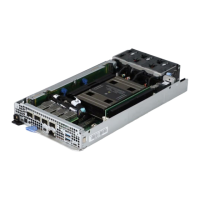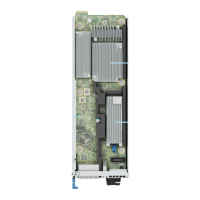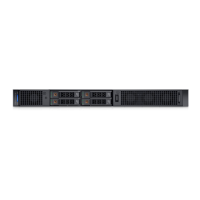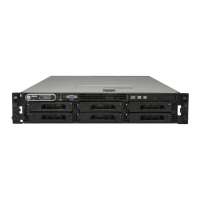NVMe Settings
This option sets the NVMe drive mode. If the system contains NVMe drives that you want to configure in a RAID array, you
must set both this field and the Embedded SATA field on the SATA settings menu to RAID Mode. You may also need to change
the Boot Mode setting to UEFI.
To view the NVMe Settings screen, power on the system, press F2, and click System Setup Main Menu > System BIOS >
NVMe Settings.
Table 35. NVMe Settings details
Option Description
NVMe mode Enables or disables the boot mode. The option is set to Non-RAID mode by default.
BIOS NVMe Driver Sets the drive type to boot the NVMe driver. The available options are Dell Qualified
Drives and All Drives. This option is set to Dell Qualified Drives by default.
Boot Settings
The Boot Settings only support UEFI mode.
● UEFI: The Unified Extensible Firmware Interface (UEFI) is a new interface between operating systems and platform
firmware. The interface consists of data tables with platform related information, boot and runtime service calls that are
available to the operating system and its loader. The following benefits are available when the Boot Mode is set to UEFI:
○ Support for drive partitions larger than 2 TB.
○ Enhanced security (e.g., UEFI Secure Boot).
○ Faster boot time.
To view the Boot Settings screen, power on the system, press F2, and click System Setup Main Menu > System BIOS >
Boot Settings.
Table 36. Boot Settings details
Option Description
Boot Mode Specifies the boot mode of the system. This option is set to UEFI by default.
Boot Sequence Retry Enables or disables the Boot sequence retry feature or resets the system. When
this option is set to Enabled and the system fails to boot, the system re-attempts
the boot sequence after 30 seconds. When this option is set to Reset and the
system fails to boot, the system reboots immediately. This option is set to Enabled
by default.
Hard-disk Failover Enables or disables the Hard-disk failover. This option is set to Disabled by default.
Generic USB Boot Enables or disables the generic USB boot placeholder. This option is set to
Disabled by default.
Hard-disk Drive Placeholder Enables or disables the Hard-disk drive placeholder. This option is set to Disabled
by default.
Clean all Sysprep variables and order When this option is set to None, BIOS will do nothing. When set to Yes, BIOS will
delete variables of SysPrep #### and SysPrepOrder this option is a onetime option,
will reset to none when deleting variables. This setting is only available in UEFI
Boot Mode. This option is set to None by default.
UEFI Boot Settings Specifies the UEFI boot sequence. Enables or disables UEFI Boot options.
NOTE: This option controls the UEFI boot order. The first option in the list will
be attempted first.
Table 37. UEFI Boot Settings
Option Description
UEFI Boot Sequence Enables you to change the boot device order.
Boot Options Enable/Disable Enables you to select the enabled or disabled boot devices
40 Pre-operating system management applications

